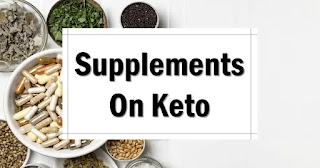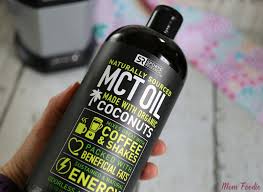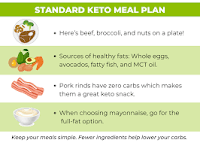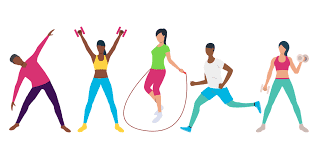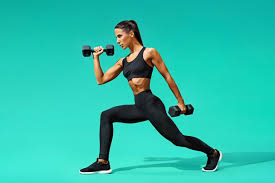The Centerpiece of Your Keto Thanksgiving
No Thanksgiving is complete without a turkey. Our keto-friendly version is basted in a rich, herb-infused butter, ensuring it's both moist and flavorful.
1. Herb-Buttered Roast Turkey
Ingredients:
- 1 whole turkey (size as per need)
- 1 cup unsalted butter, softened
- 2 tablespoons fresh rosemary, chopped
- 2 tablespoons fresh thyme, chopped
- 2 tablespoons fresh sage, chopped
- 4 cloves garlic, minced
- Salt and pepper to taste
Instructions:
- Preheat your oven to 325°F (165°C).
- In a bowl, mix the softened butter with rosemary, thyme, sage, garlic, salt, and pepper.
- Pat the turkey dry and season the cavity with salt and pepper.
- Gently loosen the skin from the turkey breast and rub a portion of the herb butter under the skin.
- Rub the outside of the turkey with the remaining butter and season with more salt and pepper.
- Place the turkey in a roasting pan and roast per pound as per instructions (usually about 15 minutes per pound).
- Baste the turkey every 30-40 minutes with the drippings.
- The turkey is done when an internal thermometer inserted into the thickest part of the thigh reads 165°F (75°C).
- Let the turkey rest for 20-30 minutes before carving.
A Low-Carb Alternative to Mashed Potatoes
Creamy and comforting, this cauliflower mash is a perfect low-carb substitute for traditional mashed potatoes.
2. Cauliflower Mash
Ingredients:
- 1 large head of cauliflower, cut into florets
- 4 ounces cream cheese, softened
- 4 tablespoons unsalted butter
- 2 cloves garlic, minced
- Salt and pepper to taste
- Fresh chives, chopped for garnish
Instructions:
- Steam the cauliflower florets until very tender, about 7-10 minutes.
- In a food processor or blender, combine the steamed cauliflower, cream cheese, butter, and garlic.
- Blend until smooth and creamy.
- Season with salt and pepper to taste.
- Garnish with chopped chives before serving.
Fresh and Flavorful Side Dish
This simple yet elegant side dish pairs perfectly with the richness of other Thanksgiving dishes.
3. Green Bean Almondine
Ingredients:
- 1 pound fresh green beans, trimmed
- 1/4 cup sliced almonds
- 2 tablespoons unsalted butter
- Juice of 1/2 lemon
- Salt and pepper to taste
Instructions:
- Blanch the green beans in boiling water for 3-4 minutes until crisp-tender, then plunge into ice water to stop the cooking process.
- In a skillet, melt the butter over medium heat.
- Add the almonds and cook until they are lightly browned.
- Add the green beans and toss to coat.
- Squeeze lemon juice over the beans and season with salt and pepper.
- Serve warm.
An Essential Thanksgiving Classic
Ingredients:
- 1 loaf keto bread, cubed and toasted
- 1/2 cup onion, chopped
- 1 cup celery, chopped
- 1/2 cup unsalted butter
- 1 1/2 cups chicken broth
- 1 teaspoon dried sage
- 1 teaspoon dried thyme
- Salt and pepper to taste
Instructions:
- Preheat your oven to 350°F (175°C).
- In a large skillet, melt the butter and sauté the onion and celery until soft.
- Add the sage and thyme, and cook for another minute.
- In a large bowl, combine the toasted keto bread cubes with the vegetable mixture.
- Gradually add the chicken broth until the mixture is moist but not soggy.
- Season with salt and pepper.
- Transfer to a baking dish and bake for 20-25 minutes, or until the top is golden and crispy.
A Decadent Keto Dessert
This dessert combines the flavors of pumpkin pie and cheesecake, all in a low-carb package.
5. Pumpkin Pie Cheesecake
Ingredients:
For the Crust:
- 1 1/2 cups almond flour
- 1/4 cup melted butter
- 1 tablespoon erythritol
For the Filling:
- 16 ounces cream cheese, softened
- 1 cup pumpkin puree
- 3/4 cup erythritol
- 2 eggs
- 1 teaspoon vanilla extract
- 2 teaspoons pumpkin pie spice
Instructions:
- Preheat your oven to 350°F (175°C).
- Mix almond flour, melted butter, and erythritol for the crust. Press into the bottom of a 9-inch springform pan.
- Bake the crust for 10 minutes, then remove and let cool.
- In a large bowl, beat the cream cheese, pumpkin puree, erythritol, eggs, vanilla extract, and pumpkin pie spice until smooth.
- Pour the filling over the crust and smooth the top.
- Bake for 45-50 minutes or until the edges are set but the center is slightly jiggly.
- Turn off the oven and let the cheesecake cool inside for 1 hour.
- Chill in the refrigerator for at least 4 hours before serving.
With these keto-friendly Thanksgiving recipes, you can enjoy a festive and indulgent feast without compromising your dietary goals. These dishes are so delicious that they're sure to be enjoyed by all your guests, whether they're following a keto diet or not. Happy Thanksgiving, enjoy your keto Thanksgiving feast!









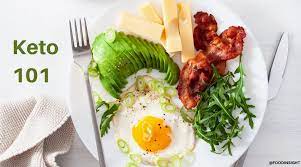
.jpg)
.jpg)
